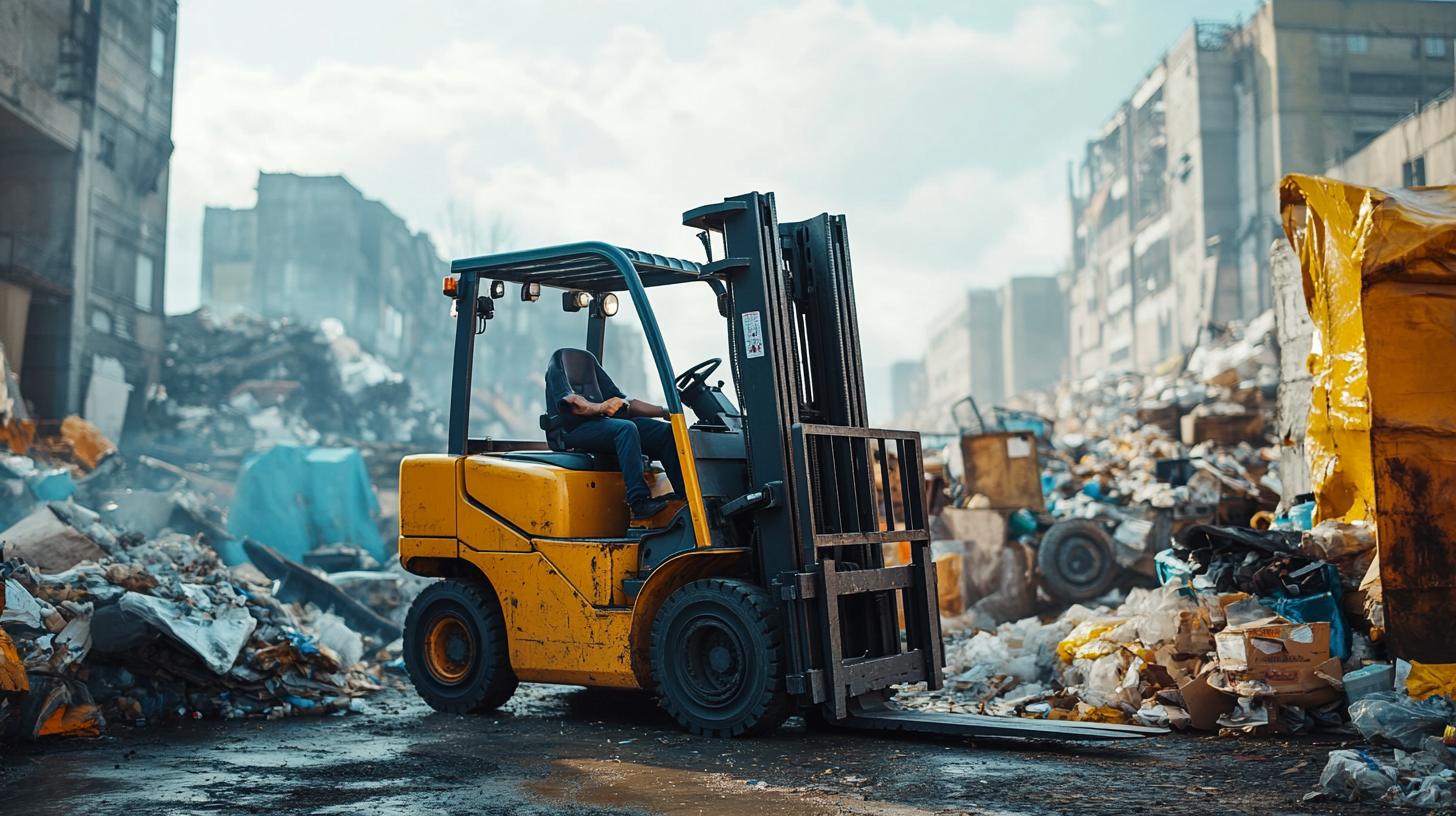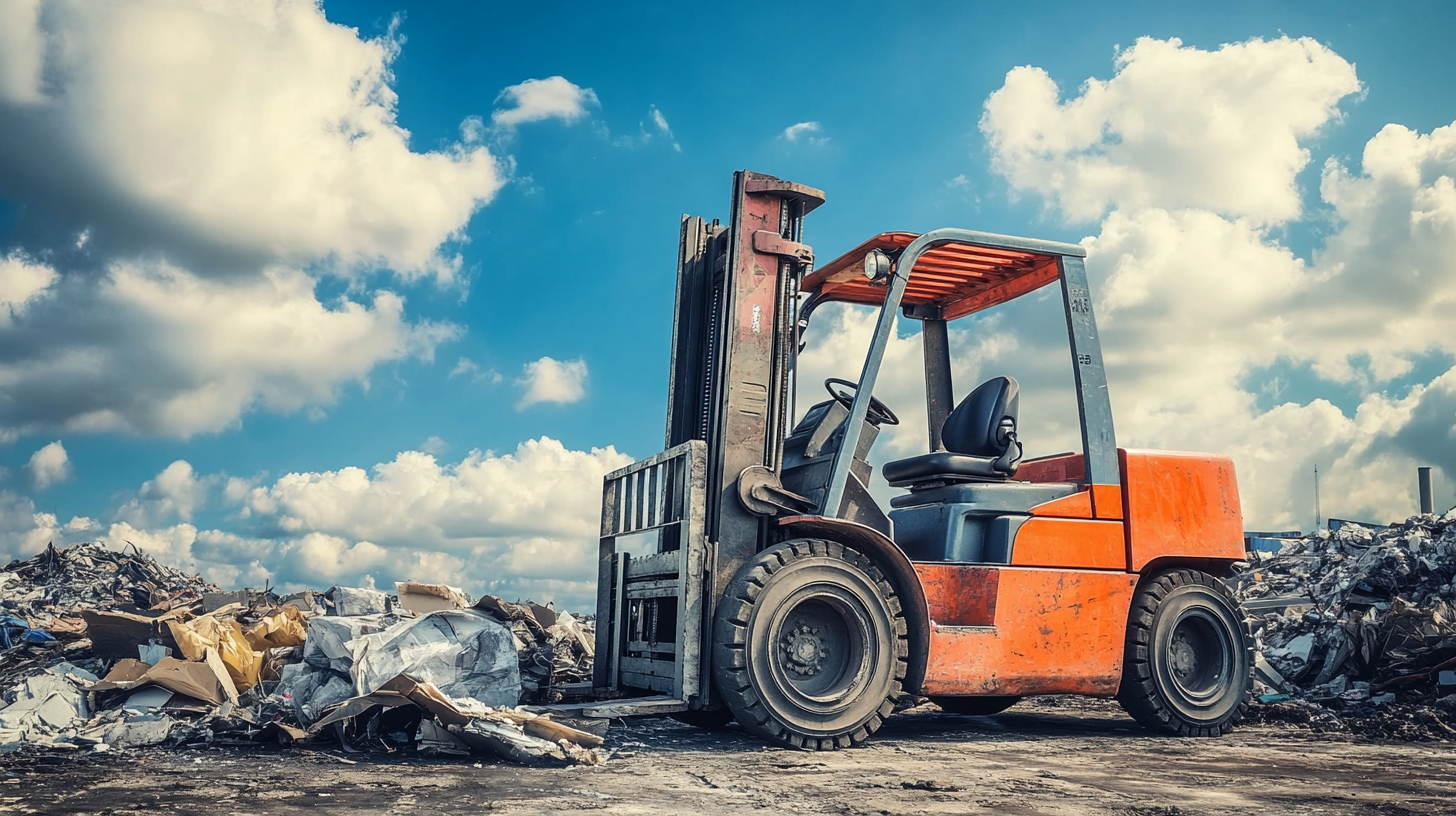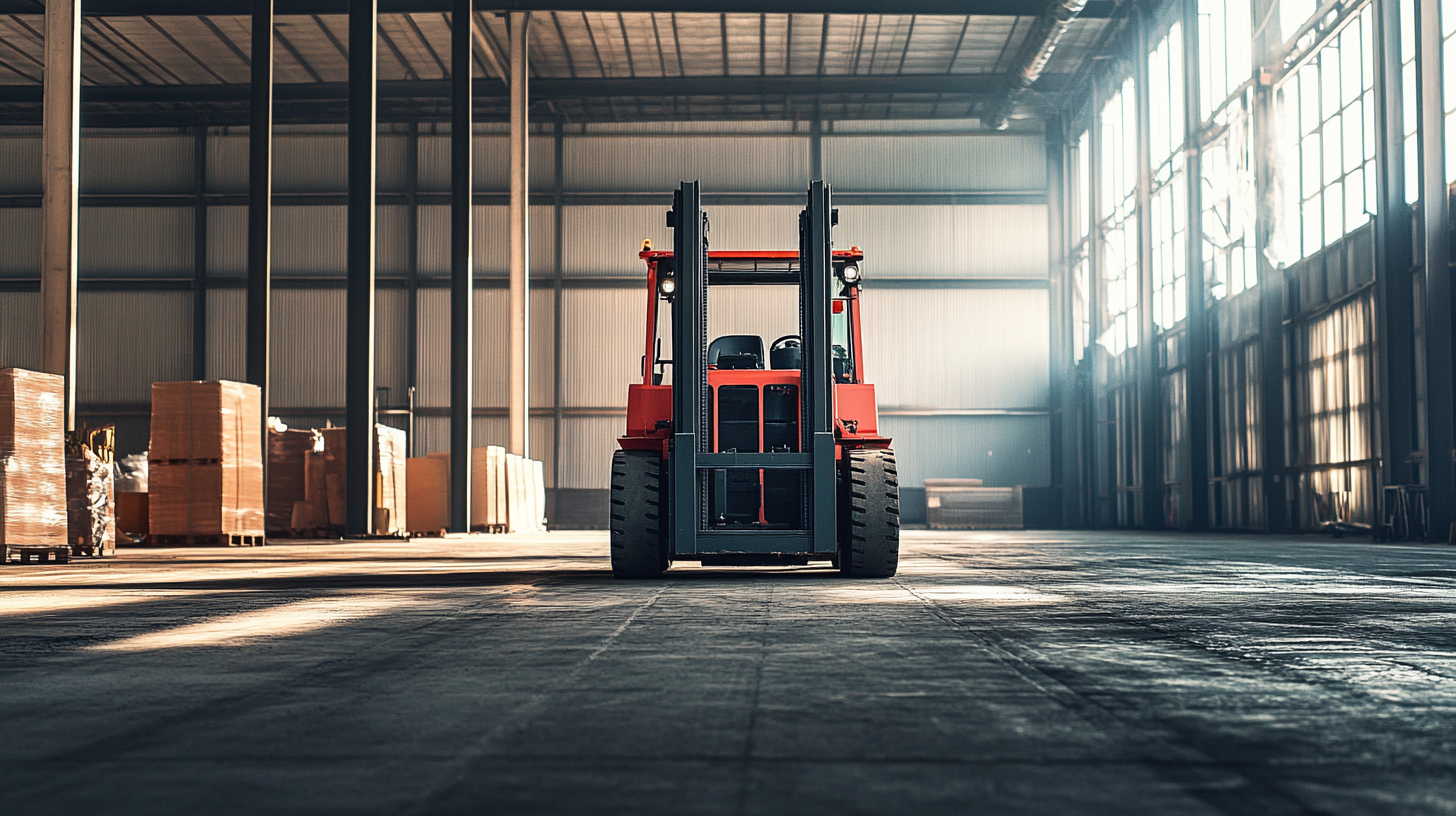10 Proven Benefits of Using Scrap Forklifts for Efficient Material Handling
In the fast-paced world of material handling, the quest for efficiency remains paramount. Businesses are continuously seeking innovative solutions to streamline operations and optimize productivity. One such solution that has gained significant traction is the Scrap Forklift. These robust machines are not only essential for lifting and transporting heavy loads but also play a pivotal role in minimizing downtime and maximizing resource utilization. By integrating Scrap Forklifts into their workflow, companies can enhance their material handling processes, ultimately leading to increased throughput and cost savings.
The benefits of utilizing Scrap Forklifts extend beyond mere functionality; they also contribute to sustainability and workplace safety. As industries strive to reduce their environmental footprint, these forklifts provide a means to efficiently handle scrap materials, facilitating recycling and waste management. Additionally, with advanced features designed for safety and ergonomic handling, Scrap Forklifts help mitigate the risk of workplace accidents. In this blog, we will delve into the ten proven benefits of using Scrap Forklifts, illustrating how they can revolutionize material handling practices and drive operational success.

The Cost-Effective Advantages of Scrap Forklifts in Material Handling
Scrap forklifts present a cost-effective solution for businesses seeking efficient material handling. With the rising prices of new equipment, many companies are turning to used forklifts as a budget-friendly alternative. Recent market trends show that the prices of used rough-terrain forklifts have softened, making them more accessible for operations that require heavy lifting. This decline in value is primarily due to a saturated market, providing an excellent opportunity for businesses to invest in reliable equipment without breaking the bank. In addition to affordability, scrap forklifts often come with significant performance advantages. By trading in worn equipment for refurbished models, businesses can take advantage of enhanced efficiency and reliability. For instance, as companies increasingly assess the total emissions associated with equipment, many are shifting towards electric options. The global electric forklift market is projected to grow significantly, estimated at USD 45.01 billion in 2023, with a compound annual growth rate of 14.4% from 2024 to 2030. These advancements not only support environmental goals but also contribute to long-term savings in operational costs. Furthermore, adopting a circular economy business model through the use of refurbished or scrap forklifts aligns with sustainability initiatives and can bolster a company's competitive edge. In light of new emissions regulations and incentives offered in various regions, businesses have the opportunity to invest in low-emission alternatives that also enhance their material handling efficiency. As firms seek to modernize their operations without incurring substantial costs, scrap forklifts stand out as a viable option worthy of consideration.

Enhancing Workplace Safety with Scrap Forklifts
In today’s fast-paced industrial environment, enhancing workplace safety is a top priority. One effective way to achieve this is through the utilization of scrap forklifts, which offer specialized features designed for efficient material handling. These forklifts are tailored to manage the unique demands of scrap materials, ensuring employees can operate them safely even in challenging workspace conditions.
Scrap forklifts are equipped with advanced safety mechanisms, including reinforced structures and enhanced visibility. Their sturdy design helps minimize the risk of accidents frequently associated with transporting heavy or irregularly shaped loads. Additionally, the ergonomic controls and intuitive operation reduce operator fatigue, allowing staff to focus on their tasks while maintaining safety protocols. With these enhancements, workplaces can significantly decrease the likelihood of injuries, contributing to a safer environment.
Furthermore, the integration of scrap forklifts into the material handling process streamlines operations by reducing the need for manual lifting. This not only cuts down on the physical strain placed on workers but also enables quicker and more efficient handling of materials. When workers can rely on equipment specifically designed for scrap management, they can navigate the workspace with greater confidence, ultimately fostering a culture of safety and efficiency throughout the organization.

Boosting Productivity: How Scrap Forklifts Streamline Operations
Scrap forklifts are transforming the landscape of material handling by increasing efficiency and productivity in warehouses and manufacturing facilities. One of the key advantages of utilizing these specialized machines is their ability to streamline operations. Unlike traditional forklifts, scrap forklifts are designed to handle heavy and awkward loads that are often found in industrial settings. This specialized design not only improves maneuverability but also ensures that materials can be transported quickly and safely.
Moreover, scrap forklifts minimize the risk of workplace injuries. Their ergonomic features and intuitive controls allow operators to move materials without straining their bodies. As a result, companies can maintain higher employee satisfaction and reduce downtime due to injuries. This focus on safety and efficiency translates into smoother logistics and faster turnaround times, ultimately boosting overall productivity within the organization.
Additionally, adopting scrap forklifts can lead to significant cost savings. By improving handling times and reducing the wear and tear on both employees and equipment, businesses can optimize their operational costs. Enhanced material handling processes mean that inventory can be moved and processed faster, allowing for better stock management and reduced waste. In a fast-paced market, being able to efficiently manage resources is crucial for staying competitive, making scrap forklifts an indispensable asset for many industries.

Versatility of Scrap Forklifts in Diverse Industrial Applications
Scrap forklifts have emerged as indispensable tools in various industrial applications, showcasing their versatility across sectors such as construction, recycling, and manufacturing. According to a report by the Material Handling Industry of America, over 60% of material handling operations now incorporate specialized equipment, including scrap forklifts, to boost efficiency and productivity. The design of scrap forklifts allows them to easily maneuver around tight spaces and handle diverse materials, making them well-suited for the dynamic demands of modern industrial environments.
In the construction sector, scrap forklifts play a critical role in transporting heavy debris and materials, thus streamlining operations and ensuring safety on-site. A survey conducted by the Occupational Safety and Health Administration (OSHA) indicated that workplaces utilizing advanced equipment, such as scrap forklifts, reported a 30% reduction in workplace accidents. This is largely due to the forklifts' ability to provide ergonomic lifting solutions, minimizing manual handling risks associated with heavy materials.
Moreover, in recycling operations, these forklifts significantly enhance sorting and loading processes. According to the Institute of Scrap Recycling Industries (ISRI), utilizing scrap forklifts can increase material throughput by up to 40%, allowing companies to maximize their recycling efficiency while reducing operational costs. This efficiency is crucial as the demand for processed scrap materials continues to surge, driven by a growing emphasis on sustainability and environmental responsibility across industry sectors.
Environmental Benefits of Utilizing Scrap Forklifts in Warehousing
In the contemporary warehousing landscape, the push for sustainability has led to an increasing reliance on scrap forklifts, effectively supporting the green initiatives of businesses. These forklifts, often refurbished or repurposed, not only contribute to reducing waste but also promote a circular economy by giving new life to machinery that might otherwise be discarded. By utilizing scrap forklifts, companies significantly decrease their environmental footprint, minimizing the need for new materials and the associated carbon emissions involved in manufacturing new equipment.
The integration of electric and lithium-ion battery technology into scrap forklifts further amplifies their environmental benefits. As the global forklift market is on track to achieve substantial growth, with projections reaching USD 118.39 billion by 2032, businesses are increasingly recognizing that employing energy-efficient forklifts can lead to direct cost savings and a reduction in greenhouse gas emissions. Companies like Heli are at the forefront of this transition, showcasing how electric forklifts can enhance operational efficiency while also aligning with sustainability goals.
Moreover, initiatives like the San Joaquin Valley Zero-Emission Cargo Handling Demonstration Project illustrate the potential of advanced technologies in promoting eco-friendly practices in logistics. Such projects pave the way for the adoption of innovative solutions, ensuring that the future of material handling not only meets the growing demands of the sector but does so in a manner that is considerate of our planet's resources. The shift towards scrap forklifts is not merely a trend; it is a crucial step towards a more sustainable and efficient warehousing paradigm.



